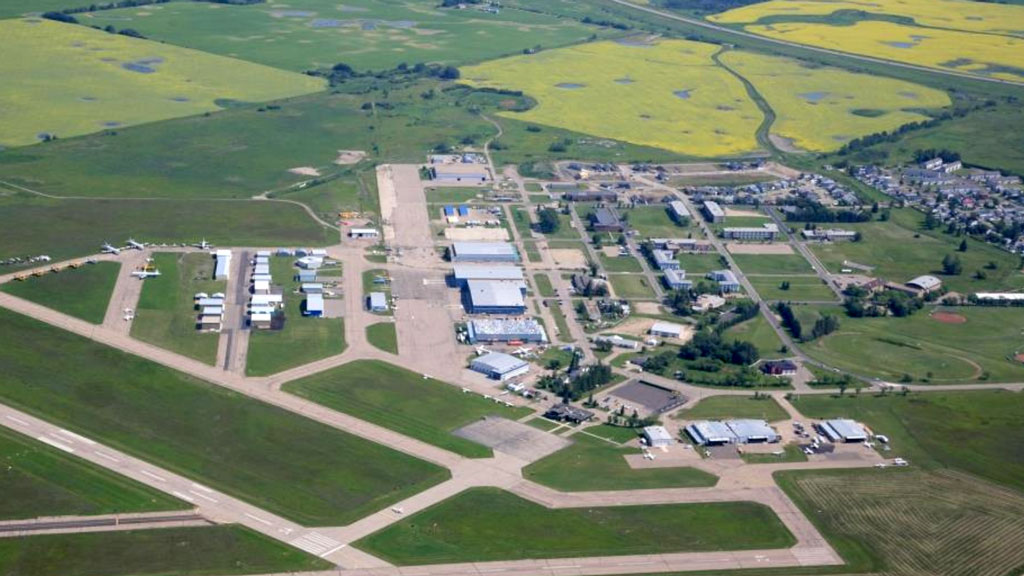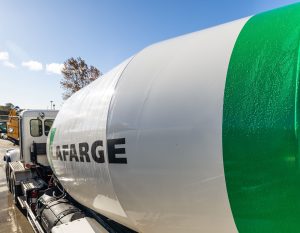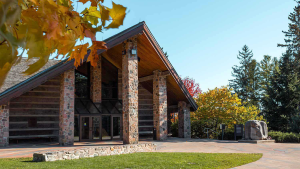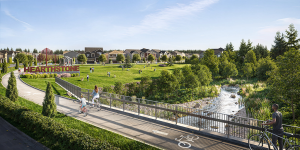The first phase of expansion work at Red Deer Regional Airport in Alberta is scheduled to wrap up this summer, paving the way for two more stages that will transform the venue into a national transportation logistics hub.
The airport, originally built during the Second World War to train Allied Forces, is being expanded and upgraded to handle more cargo, trade volumes and passenger service, and increase tourism in central Alberta.
Phase one of the project has included key infrastructure upgrades such as widening the main runway to 45 metres from 30 metres, along with strengthening the main apron and taxiway and addition of hangar space.
The upgrades will allow the airport to attract the types of aircraft commonly associated with low-cost airlines, cargo operators and heavy aircraft maintenance and repair facilities. Work is expected to be complete in July.
A second phase of work is slated to begin later this year. The project includes construction of a new, low-cost terminal and expansion of the main parking lot at the airport.
“We are hopeful the terminal expansion will begin in the fall,” airport CEO Graham Ingham said in a statement to the Journal of Commerce. “We have not finalized the design or materials yet.”
The airport is in the process of issuing a request for proposals to choose a contractor for the next phase. The stage is expected to take up to a year to complete.
A third and final phase, meanwhile, is currently in the planning stages and expected to start in 2024. The three phases have been staged to limit the impact on the airport while it is still operating.
The government is pumping $30 million into the two-year venture to expand Airport Drive to provide direct access to the site from Highway 2A and support civil works, including water sanitation, stormwater and fibre optics, to Township Road 374 to support new business opportunities.
The project will create additional emergency access to the airport and the Hamlet of Springbrook, increasing safety for the surrounding community and airport users.
The provincial funding, according to Ingham, will help central Alberta expand its economic impact through diversification.
“We already have a tenant looking to expand their business as a result of this positive development. By building the road north, we now have the opportunity to access the additional 220 acres, which we hope will bring in cargo, aircraft repair and other airline-related services. This expansion project will also result in a new passenger terminal allowing for 737 aircraft passenger service.”
The plan is to build regional capacity and enhance the economic corridor by providing an efficient and affordable low-cost service model for all airport users. There are more than 200 acres of prime runway-adjacent real estate ready to be developed.
The venture will create nearly 200 jobs during construction and another 350 jobs afterwards. It is expected to generate close to $1 million in additional tax revenue for Red Deer County when the lands are fully developed.
According to a 2022 Statistics Canada report, Alberta’s aviation and aerospace industries employ more than 18,000 people. The province says these industries contributed $1.5 billion to the province’s GDP in 2021.
Graham says the aviation and aerospace industries help diversify the local economy and the projects fall in line with the provincial government’s goal of attracting more of that type of business to the province.
Paul Lane, chief operating officer at Air Spray Airtankers, which employs 150 aviation professionals and is the largest business at the airport, says the company is delighted with the work being done.
“This investment allows Air Spray to move forward with our expansion plans to add additional hangar space at the airport.”
Local politicians are eager to see the projects proceed.
“The Red Deer Regional Airport is situated along one of the busiest transportation hubs in the province. This expansion will provide huge economic benefits to Central Alberta,” says Red Deer County Mayor Jim Wood.
City of Red Deer Mayor Ken Johnston says the airport is an economic catalyst for the area.
Once complete, all three phases of the airport’s expansion are expected to improve the fluidity and resiliency of Alberta’s transportation system and economic corridor at an affordable rate for businesses and passengers alike.
Minister of Transportation and Economic Corridors Devin Dreeshen said in a statement Alberta’s airports play a critical role in strengthening and diversifying the economy by expanding access to markets.
“This investment will allow additional aviation cargo and logistics services, which will not only provide new travel options and get more products to market but also create jobs and help attract new investment to central Alberta.”











Recent Comments
comments for this post are closed